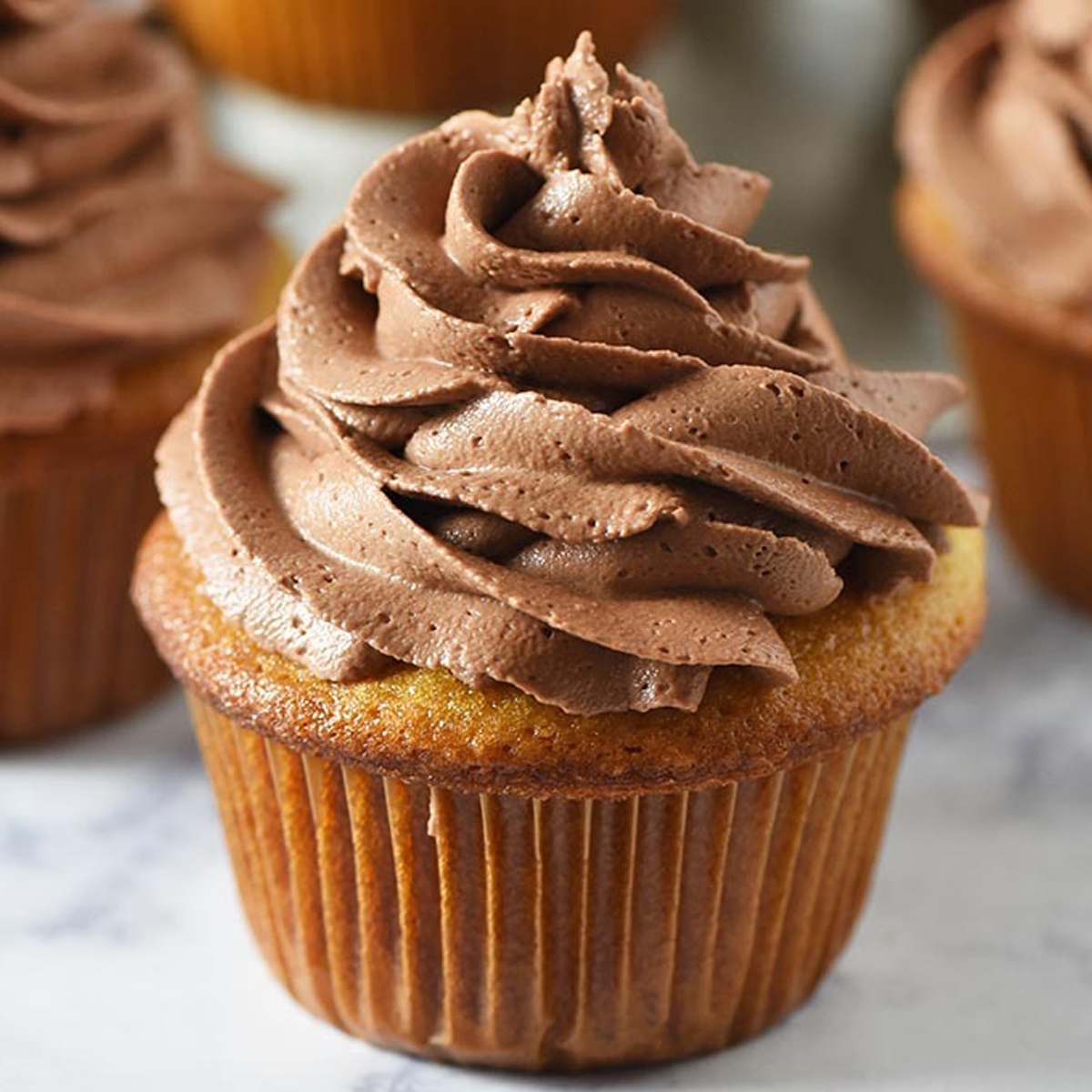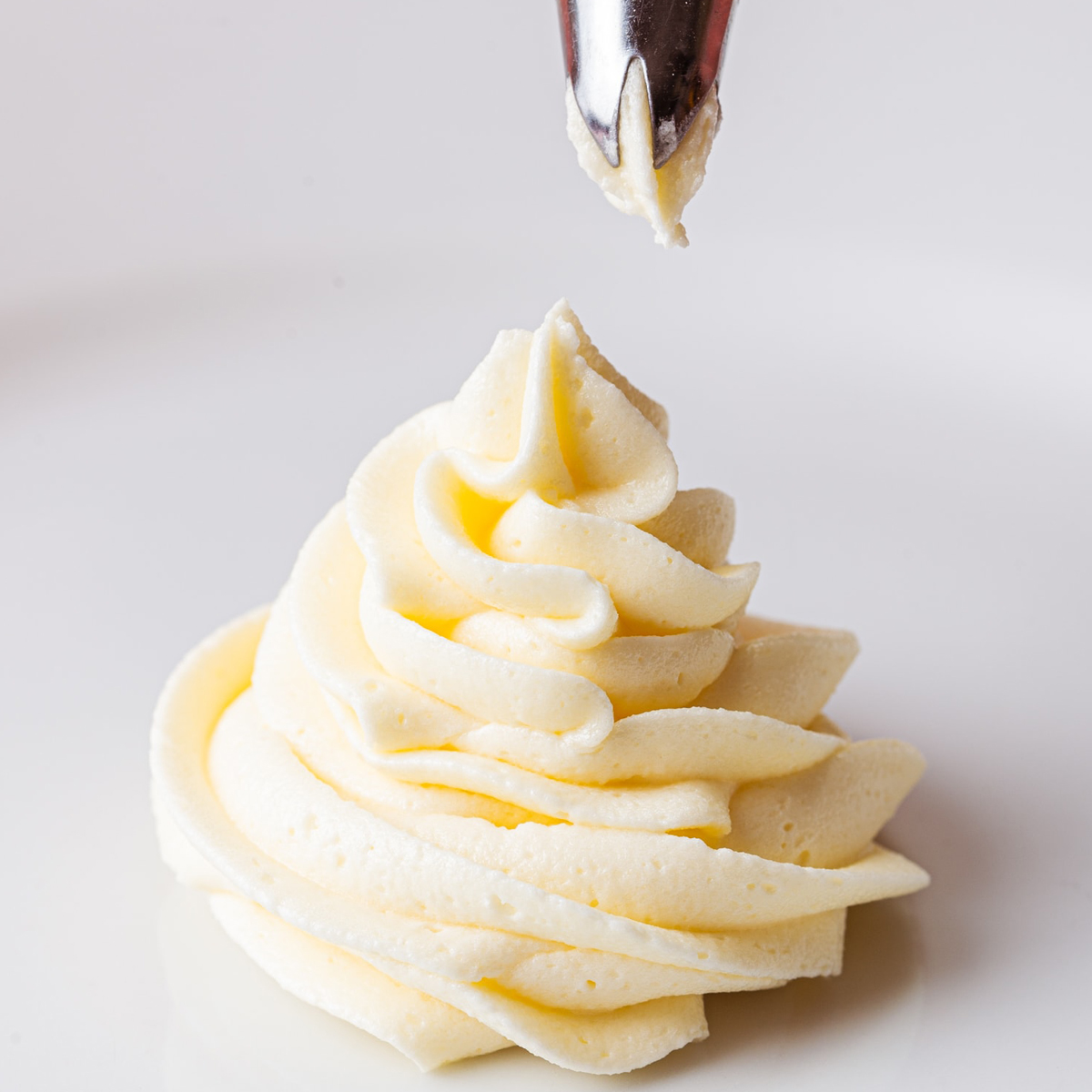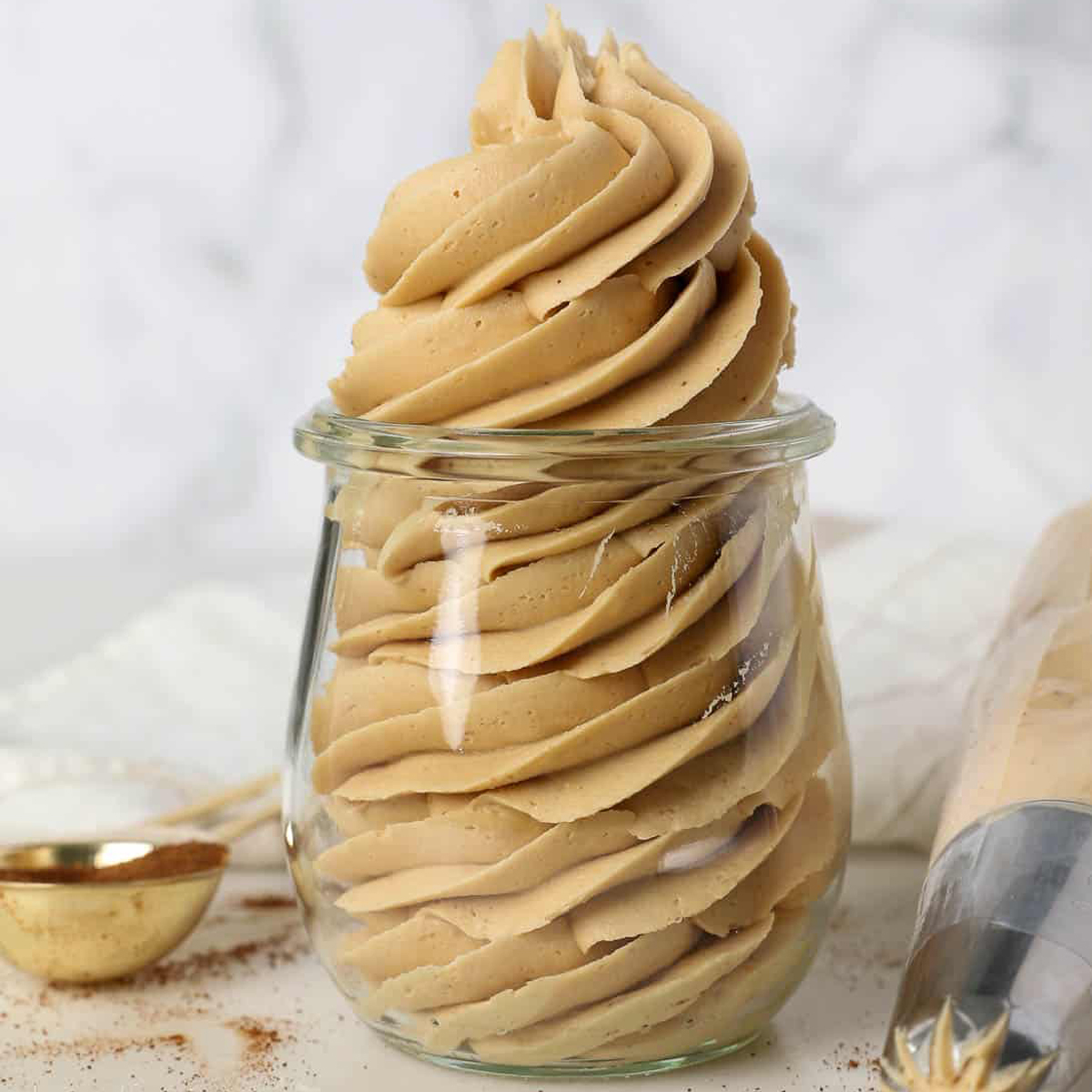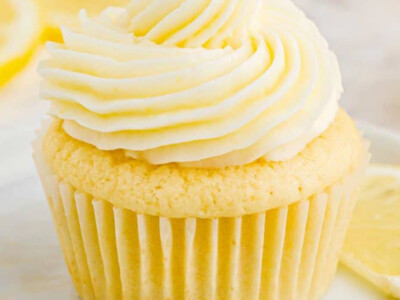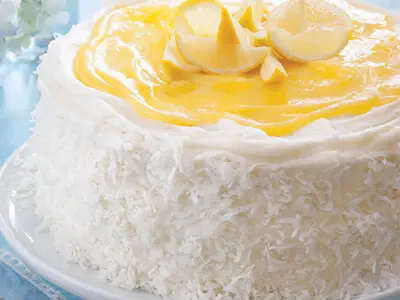The Best Fluffy Pancakes recipe you will fall in love with. Full of tips and tricks to help you make the best pancakes.
French Buttercream Mastery
French buttercream is a luxurious and velvety frosting known for its rich, custard-like flavor and silky-smooth texture. It is a classic French pastry component that is often used to adorn cakes, cupcakes, and other desserts. Unlike some other buttercreams, French buttercream is made with egg yolks and sugar syrup, which gives it a distinct taste and a delightful creamy consistency. This sophisticated frosting is a favorite among pastry chefs and those who appreciate the finer aspects of dessert crafting, making it a delightful addition to any confectionary masterpiece.
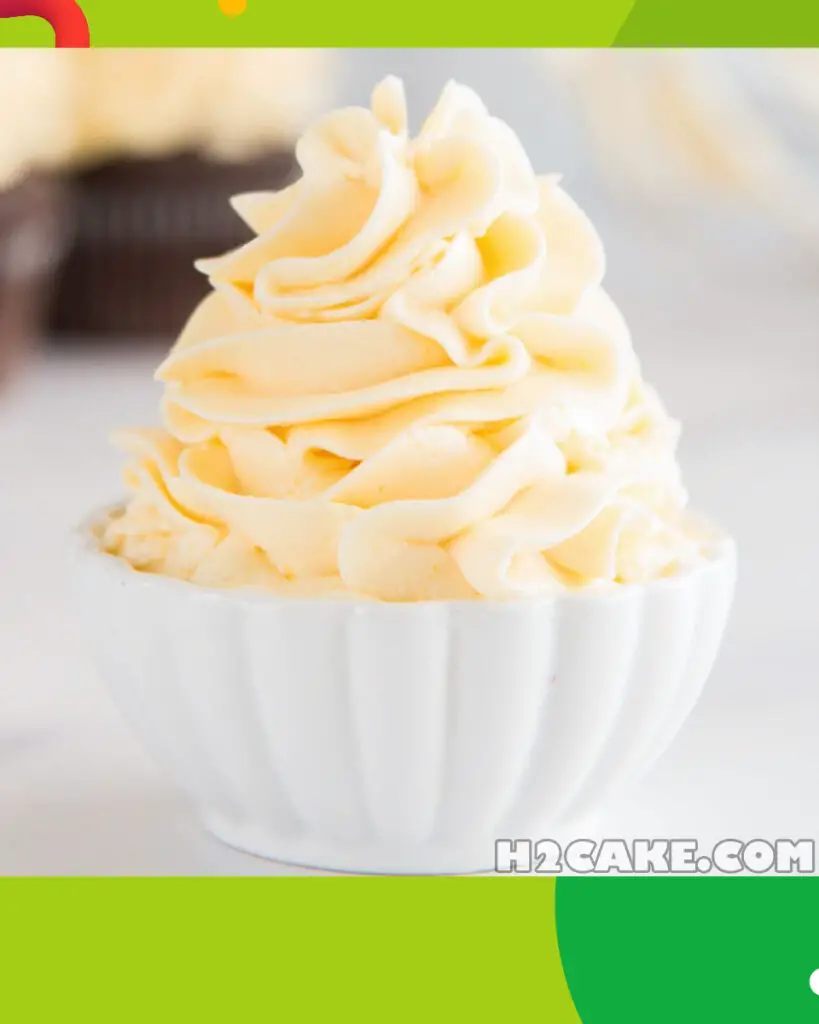
What Is French Buttercream?
French buttercream is a delectable type of buttercream frosting used in baking and pastry making. What sets it apart from other buttercreams is its luxurious, custard-like texture and rich flavor. This frosting is made by combining egg yolks, sugar syrup, and butter, resulting in a creamy, silky, and velvety consistency. It’s known for its exceptional smoothness and a delicate, not overly sweet taste.
The process of making French buttercream involves whisking egg yolks while simultaneously pouring in a hot sugar syrup, which cooks the yolks. Once the mixture cools, softened butter is gradually incorporated to create a luscious, buttery frosting.
French buttercream can be flavored in various ways, such as with vanilla extract, chocolate, fruit purees, coffee, or liqueurs, allowing for versatility in pairing it with different cakes and pastries. Due to its elegant texture and flavor, it’s often used for filling cakes, topping cupcakes, or decorating desserts where a smooth and rich frosting is desired.
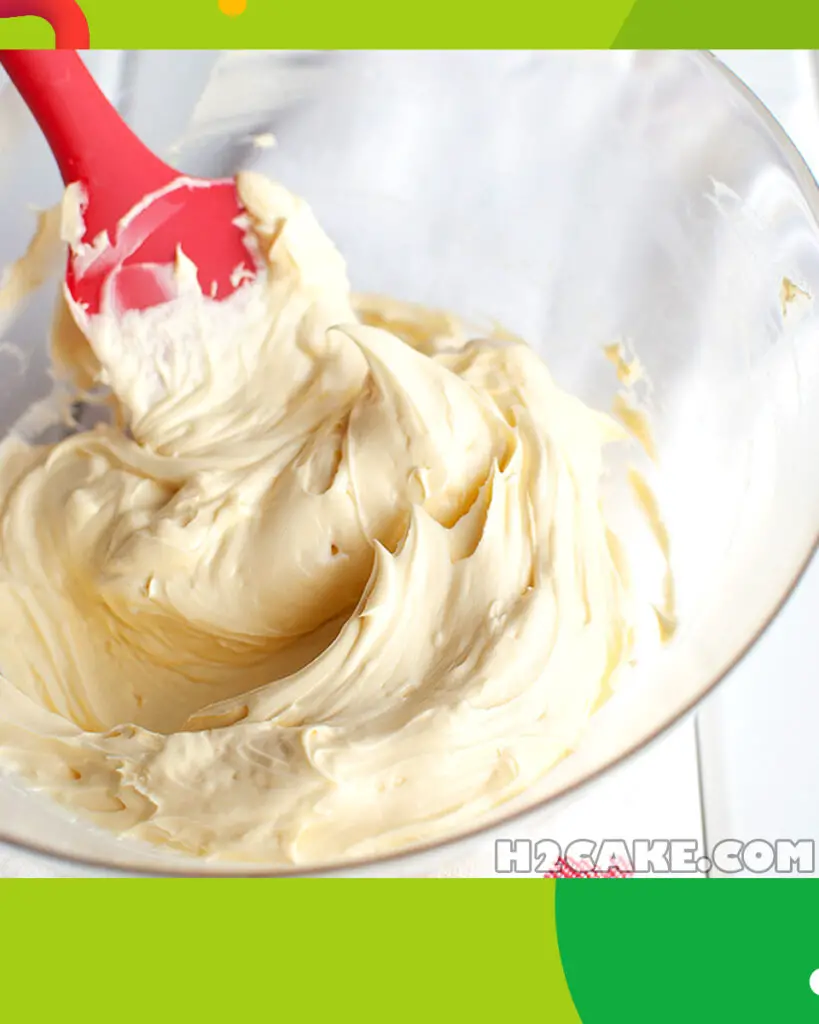
Why You Will Love French Buttercream Recipe?
- Silky and Creamy Texture: French buttercream is incredibly smooth and velvety, making it a pleasure to work with and a delight to taste. Its luxurious texture melts in your mouth, creating a truly indulgent experience.
- Rich and Custard-Like Flavor: This buttercream boasts a rich, custard-like flavor that is less sweet than some other frosting varieties. It strikes a perfect balance between sweetness and the natural richness of egg yolks and butter.
- Versatility in Flavor: You can easily customize the flavor of French buttercream by adding extracts, chocolates, fruit purees, or other ingredients. This adaptability allows you to match it perfectly with your cake or dessert of choice.
- Perfect for Filling Cakes: French buttercream is an ideal filling for layer cakes. Its luxurious texture pairs wonderfully with various cake flavors, enhancing the overall taste and mouthfeel.
- Elegant Cake Decoration: The smooth and glossy appearance of French buttercream makes it a fantastic choice for decorating cakes. It can be piped into intricate designs, creating visually stunning desserts.
- Great for Piping: This frosting pipes beautifully onto cupcakes and other treats. It holds its shape well, allowing for intricate designs and creative decorating possibilities.
- A French Pastry Classic: French buttercream is a classic component of French pastry-making, and mastering this recipe will give you a sense of accomplishment and allow you to create authentic French desserts.
- Perfect for Special Occasions: Whether you’re baking for a special celebration or just treating yourself to a gourmet dessert, French buttercream adds an elegant touch that elevates any occasion.
- Customizable Sweetness: You have control over the sweetness level of French buttercream. You can adjust the amount of sugar syrup or powdered sugar to suit your taste preferences.
- Smooth Finish: When used as a cake covering, French buttercream can be smoothed to perfection, creating a polished and flawless appearance.
Overall, French buttercream is beloved by both professional pastry chefs and home bakers for its exceptional taste and versatility. It elevates desserts to a level of sophistication that is sure to impress and satisfy even the most discerning palates.
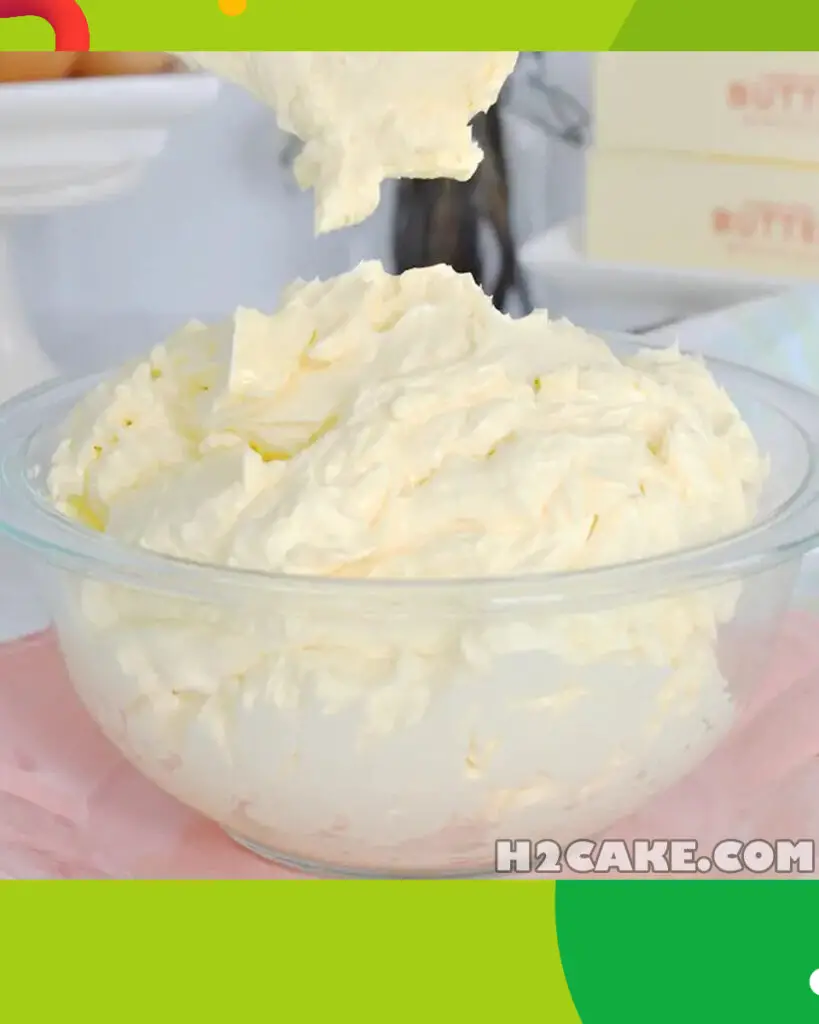
Ingredients For French Buttercream
For the Sugar Syrup:
- 1 cup (200 grams) granulated sugar
- 1/4 cup (60 milliliters) water
For the Egg Yolk Mixture:
- 5 large egg yolks, at room temperature
For the Butter Mixture:
- 1 cup (2 sticks or 226 grams) unsalted butter, softened but still cool
- 1 teaspoon pure vanilla extract (or other flavorings of your choice)
How To Make French Buttercream
Step 1: Prepare the Sugar Syrup
- In a small saucepan, combine 200 grams (1 cup) of granulated sugar and 60 milliliters (1/4 cup) of water.
- Heat the mixture over medium-high heat, stirring continuously until the sugar completely dissolves.
- Once the sugar is dissolved, stop stirring and let the syrup come to a boil. Use a candy thermometer to monitor the temperature. You want the syrup to reach the soft-ball stage, which is around 238°F (114°C). This should take approximately 5-7 minutes.
Step 2: Prepare the Egg Yolk Mixture
- While the sugar syrup is heating, prepare the egg yolk mixture. In a heatproof bowl, whisk 5 large egg yolks until they become slightly pale and thick. This step is crucial for achieving a smooth buttercream, so take your time.
Step 3: Combine the Sugar Syrup and Egg Yolk Mixture
- When the sugar syrup reaches the soft-ball stage (238°F or 114°C), remove it from the heat immediately.
- Begin pouring the hot sugar syrup in a thin, steady stream into the whisked egg yolks while continuously whisking. This process is called tempering. Continue to whisk until the mixture cools to room temperature. It should become thick, pale, and fluffy.
Step 4: Incorporate the Butter
- Once the egg yolk mixture is at room temperature, start adding the softened butter. Gradually add it, a few tablespoons at a time, while whisking continuously. The mixture may appear curdled or soupy at some point, but continue to whisk, and it will come together into a smooth and creamy consistency.
- After all the butter is incorporated, continue to whisk for an additional 2-3 minutes until the French Buttercream is fluffy and well combined.
Step 5: Flavor the French Buttercream
- Add 1 teaspoon of pure vanilla extract (or other flavorings of your choice) to the buttercream and whisk until fully incorporated. Feel free to get creative with your flavorings!
Step 6: Your French Buttercream is ready to use.
- Use it immediately to frost cakes or cupcakes, or you can store it in an airtight container in the refrigerator for a short period. If refrigerated, make sure to bring it back to room temperature and re-whisk it before using.
This classic French Buttercream is a luxurious and versatile frosting that pairs wonderfully with various cake flavors and desserts. It’s perfect for adding a touch of elegance to your baking creations.
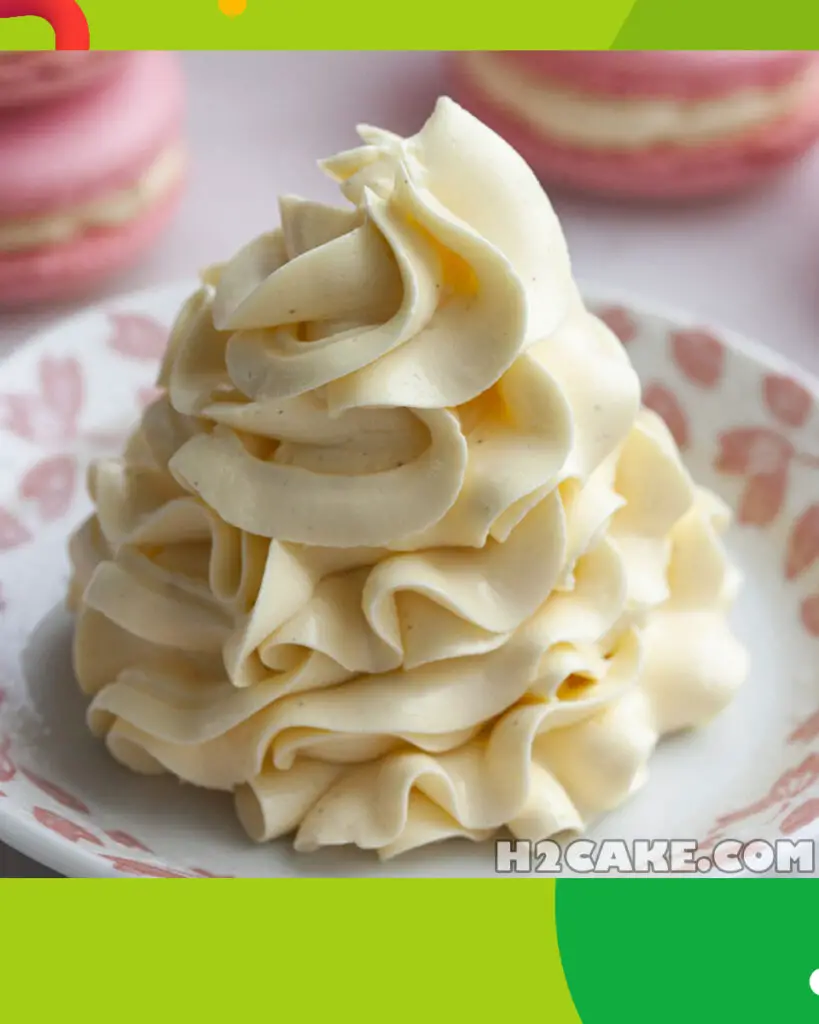
How To Serve French Buttercream
French Buttercream is a versatile and delicious frosting that can be served in various ways, depending on your preference and the dessert you’re pairing it with. Here are some serving suggestions for French Buttercream:
- Frosting Cakes: The most common way to serve French Buttercream is by using it as a frosting for cakes. Spread it evenly over the surface of your cake layers, creating a smooth and elegant finish. You can also use it to create decorative swirls, rosettes, or other cake decorations.
- Cupcake Frosting: French Buttercream is perfect for topping cupcakes. Pipe it onto cupcakes using a pastry bag and your choice of piping tip to create beautiful and delicious designs.
- Filling for Layer Cakes: French Buttercream can be used as a filling between cake layers. Spread a generous layer of buttercream between each layer to add flavor and moisture to your cake.
- Macaron Filling: Use French Buttercream as a filling for macarons. Sandwich two macaron shells together with a dollop of buttercream in the center to create a delightful and colorful treat.
- Éclairs and Cream Puffs: Fill éclairs and cream puffs with French Buttercream for a decadent pastry. You can dip the tops in chocolate ganache for an extra layer of flavor.
- Tarts and Pastries: French Buttercream can be used to fill tart shells or as a layer in pastries like mille-feuille (Napoleon). It adds a creamy and rich element to your desserts.
- Cake Roll Filling: Spread French Buttercream onto a sponge cake or jelly roll before rolling it up to create a flavorful cake roll.
- Trifle Layers: Layer French Buttercream in a trifle dessert alongside cake or cookies, fruits, and custard for a luscious and creamy component.
- Dipping Sauce: Warm and thin French Buttercream slightly to create a delicious dipping sauce for fresh fruit, marshmallows, or other sweet treats.
- As a Dollop: Simply place a dollop of French Buttercream on top of a dessert, like a slice of pie or a brownie, as an indulgent finishing touch.
- Tiramisu Component: Use French Buttercream as a creamy layer in a homemade tiramisu dessert.
- Crepes Filling: Fill crepes with a thin layer of French Buttercream, along with fresh berries or other fillings, for a delightful breakfast or dessert option.
- Fruit Parfait Layer: Layer French Buttercream with fresh fruit and granola to create a luxurious fruit parfait.
Remember to customize the flavor of your French Buttercream with extracts, flavorings, or other ingredients to match your dessert and personal preferences. It adds a touch of sophistication and elegance to any sweet treat and is sure to be a crowd-pleaser.
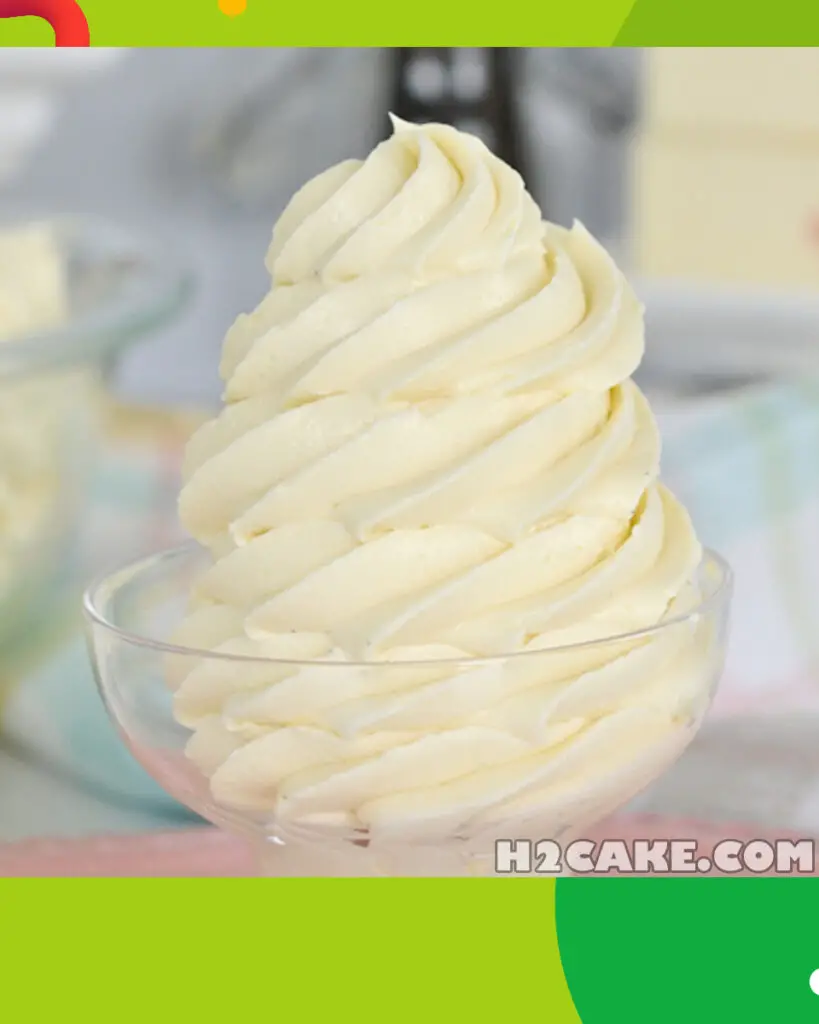
How To Store French Buttercream
Storing French Buttercream properly is important to maintain its texture and flavor. Here are steps on how to store French Buttercream:
Refrigeration:
- Transfer to an Airtight Container: Once you’ve made your French Buttercream and it has reached room temperature, transfer it to an airtight container. Make sure the container is clean and free of any moisture, as any water can affect the texture of the buttercream.
- Cover Surface: To prevent a crust from forming on the surface, place a piece of plastic wrap directly on the buttercream’s surface. This helps to seal it and keep it moist.
- Seal the Container: Close the airtight container securely, ensuring that there is no air trapped inside.
- Refrigerate: Store the container in the refrigerator. French Buttercream can be refrigerated for up to 1 week.
Bringing It Back to Room Temperature:
- Before Using: When you’re ready to use the buttercream again, take it out of the refrigerator and let it come to room temperature. This usually takes about 1-2 hours. It’s important to bring it back to room temperature before using it on your cakes or cupcakes, as cold buttercream can be difficult to work with and may not spread as smoothly.
- Re-Whip: Once it has reached room temperature, re-whip the buttercream using an electric mixer. This helps restore its smooth and creamy consistency. If it appears separated or curdled after re-whipping, continue mixing until it comes together.
Freezing (Optional):
If you want to store French Buttercream for a longer period, you can freeze it.
- Prepare for Freezing: Follow the steps for refrigeration but place the airtight container with the buttercream in the freezer instead of the refrigerator.
- Label and Date: It’s a good practice to label the container with the date so you can keep track of its freshness.
- Thawing and Re-Whipping: When you’re ready to use the frozen buttercream, transfer it to the refrigerator and let it thaw overnight. Once thawed, re-whip the buttercream to restore its texture.
Keep in mind that while freezing is an option, the texture of French Buttercream may change slightly upon thawing and re-whipping. It’s best to use freshly made buttercream for the smoothest results, but proper storage techniques can extend its usability without compromising quality.
You Might Also Like These Recipes
- Mint Chocolate Buttercream Delight
- How To Make Perfect Buttercream
- Whispers Of White Chocolate American Buttercream
- Decadent Dark Chocolate American Buttercream Delight
- Velvety Smooth Chocolate Buttercream
Tips And Tricks For French Buttercream
French Buttercream is a delightful frosting to work with, but it can be a bit finicky. Here are some tips and tricks to help you achieve the best results when making and working with French Buttercream:
1. Room Temperature Ingredients:
- Ensure that your egg yolks and butter are at room temperature before you begin. Cold ingredients can lead to a less stable or curdled buttercream.
2. Use a Candy Thermometer:
- When making the sugar syrup, use a candy thermometer to ensure it reaches the soft-ball stage (around 238°F or 114°C). Accuracy here is crucial for the right consistency.
3. Slow Sugar Syrup Pouring:
- When adding the hot sugar syrup to the egg yolks, pour it in a slow, steady stream while continuously whisking. This helps prevent the eggs from curdling.
4. Gradual Butter Incorporation:
- Add softened butter to the egg yolk mixture gradually, in small chunks. Don’t rush this step; take your time to incorporate the butter thoroughly for a silky result.
5. Don’t Worry About Temporary Curdling:
- It’s common for French Buttercream to appear curdled or soupy during the butter incorporation stage. Continue to whisk, and it will come together into a smooth texture.
6. Re-Whip for Consistency:
- After adding all the butter, continue to whip the buttercream for an additional 2-3 minutes. This helps achieve a fluffy and homogenous consistency.
7. Customize Flavorings:
- French Buttercream is versatile in terms of flavor. Add extracts, melted and cooled chocolate, fruit purees, or other flavorings to match your dessert or personal taste.
8. Storage and Re-Whipping:
- When storing in the refrigerator, place plastic wrap directly on the buttercream’s surface to prevent a crust from forming. Re-whip the buttercream after bringing it back to room temperature for a smooth texture.
9. Gradual Sugar Addition:
- When adding flavorings like fruit purees, juices, or liqueurs, do so gradually and taste as you go. This ensures you don’t make the buttercream too thin or too sweet.
10. Piping and Decorating:
- If you’re using French Buttercream for piping or decorating, ensure your cake or cupcakes are completely cooled to prevent the buttercream from melting.
11. Experiment and Practice:
- French Buttercream can take some practice to master. Don’t be discouraged by initial attempts; with experience, you’ll become more adept at creating the perfect texture and flavor.
12. Troubleshooting:
- If your buttercream appears too runny, it may be too warm. Place it in the refrigerator for 15-30 minutes and then re-whip. If it appears curdled, continue whipping; it should come together with time.
Remember that practice makes perfect when it comes to French Buttercream. Don’t be afraid to experiment with flavors and decorations to create stunning and delicious desserts.
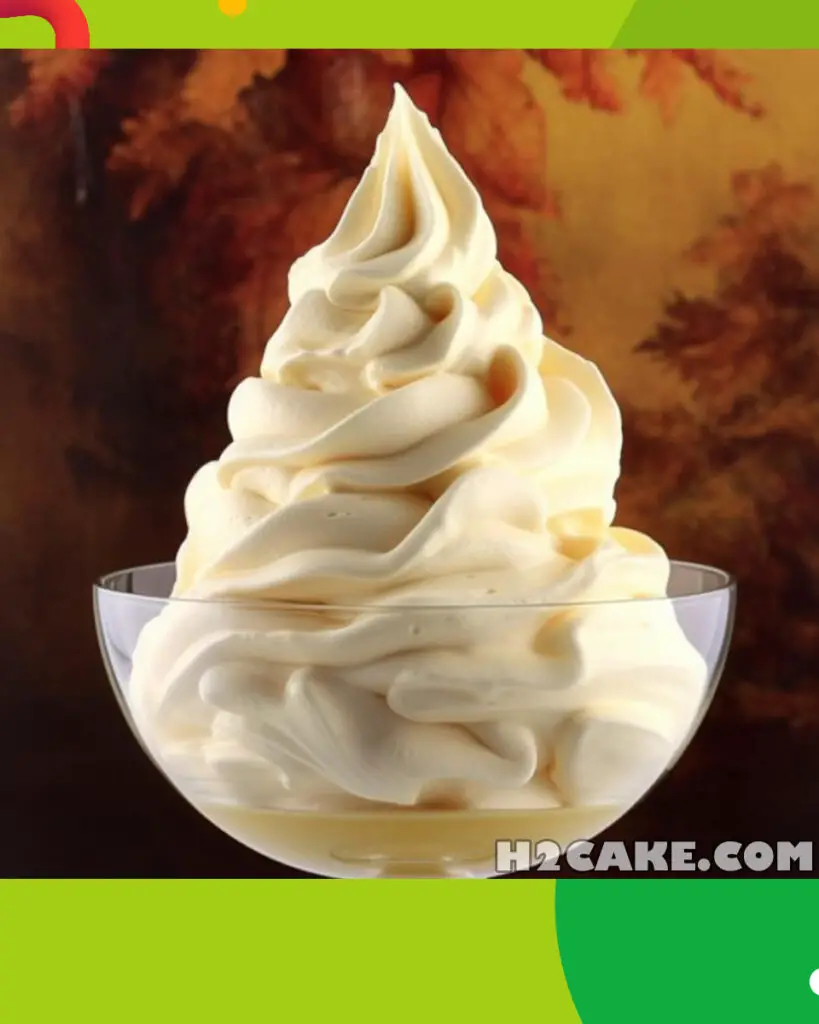
FAQs And Troubleshooting
Frequently Asked Questions
1. Can I use salted butter for French Buttercream?
- It’s best to use unsalted butter, as it allows you to control the saltiness of the buttercream. If you only have salted butter, you can use it, but be cautious with additional salt in the recipe.
2. Can I make French Buttercream in advance?
- Yes, you can make French Buttercream in advance and refrigerate it for up to a week. However, it’s best to bring it back to room temperature and re-whip it before using it to restore its texture.
3. My buttercream looks curdled. What should I do?
- If your buttercream appears curdled during the mixing process, don’t worry. Continue to whip it, and it should come together into a smooth consistency. If it’s too warm, place it in the refrigerator for a short time, then re-whip.
4. Can I freeze French Buttercream?
- Yes, you can freeze French Buttercream for longer storage. Place it in an airtight container in the freezer. When ready to use, thaw it in the refrigerator overnight and re-whip before applying.
5. My buttercream is too sweet. How can I reduce the sweetness?
- To reduce the sweetness of your buttercream, you can add more unsalted butter and continue to whip until the sweetness is balanced to your liking. Alternatively, you can add a pinch of salt to cut the sweetness.
Troubleshooting:
1. Buttercream is too runny:
- If your buttercream is too runny, it may be too warm. Place it in the refrigerator for 15-30 minutes and then re-whip. Ensure your butter is not overly softened when adding it.
2. Buttercream appears curdled:
- If the buttercream appears curdled during mixing, continue to whip it. It should come together into a smooth texture. If it’s too warm, chilling it briefly can help before re-whipping.
3. Buttercream is too thick or stiff:
- If your buttercream is too thick or stiff, it may have been overwhipped or the butter was too cold. You can gently warm it by placing the bowl over a warm water bath for a few seconds, then re-whip.
4. Buttercream is grainy:
- If your buttercream is grainy, it could be due to cold ingredients or insufficient mixing. Make sure your egg yolks and butter are at room temperature and continue to whip until smooth.
5. Buttercream has air bubbles:
- To remove air bubbles from buttercream, gently tap the bowl on the countertop to release trapped air. You can also use a spatula to smooth the surface before decorating.
6. The buttercream has a greasy texture:
- A greasy texture can result from overwhipping or using butter that is too soft. To fix it, gently warm the buttercream and re-whip it to achieve a smoother texture.
7. Buttercream is too yellow:
- The color of French Buttercream can vary depending on the color of your egg yolks. If you prefer a lighter color, use egg yolks from pale yellow eggs or add a small amount of white food coloring.
Remember that practice and patience are key when working with French Buttercream. It may take a few tries to get the texture and flavor just right, but with experience, you’ll master the art of making this delectable frosting.
Nutrition Information
Below is a rough estimate of the nutritional information for a standard serving (1 ounce or approximately 2 tablespoons) of French Buttercream:
Calories: 140-160 calories, Total Fat: 15-17 grams, Saturated Fat: 9-10 grams, Cholesterol: 60-70 mg, Sodium: 30-35 mg, Total Carbohydrates: 6-8 grams, Sugars: 6-7 grams, Protein: 0.5-1 gram
Please note that these values are approximate and can vary based on the specific recipe and variations you choose, such as flavorings or additional ingredients. French Buttercream is a delightful treat, but it should be enjoyed in moderation due to its high fat and sugar content.


